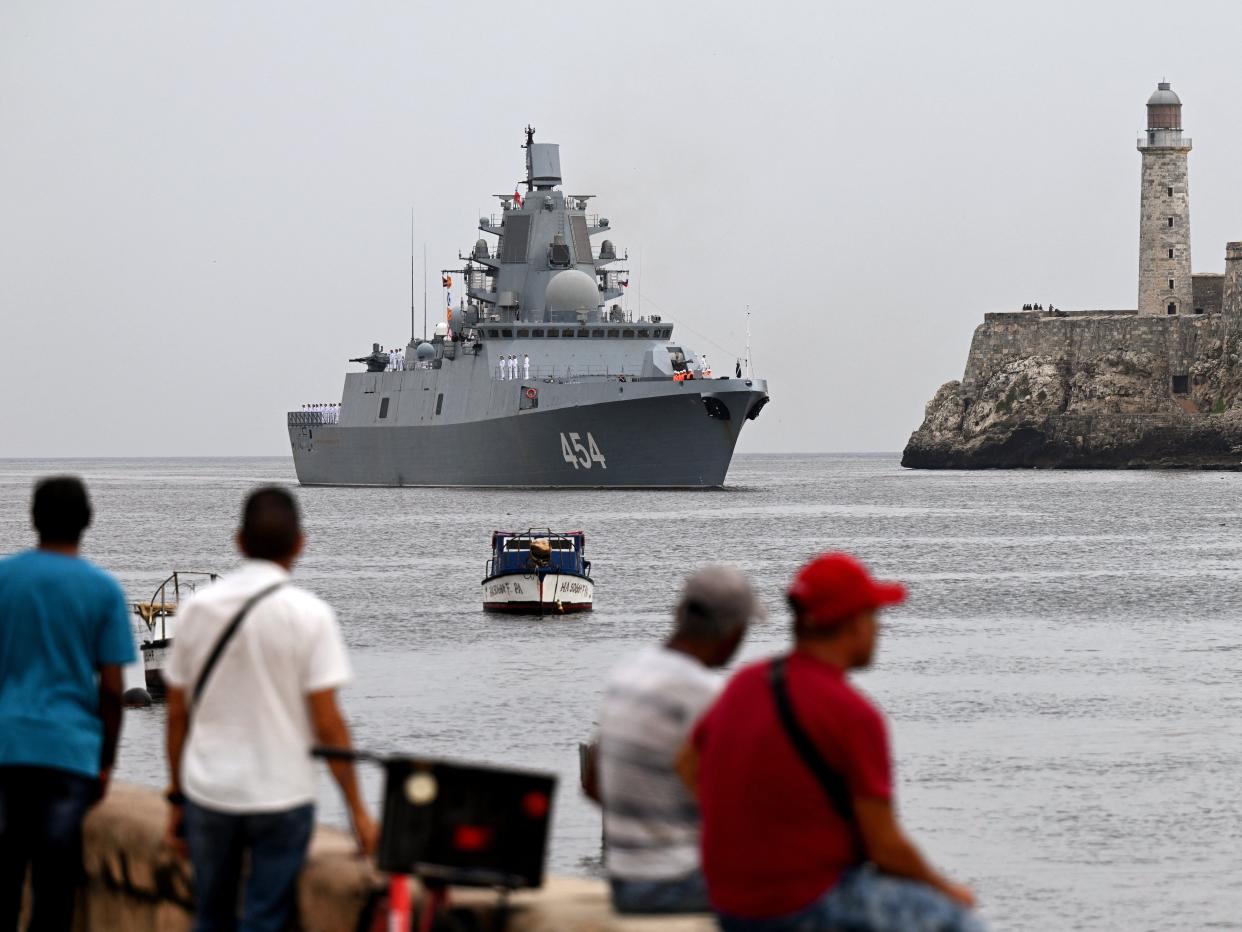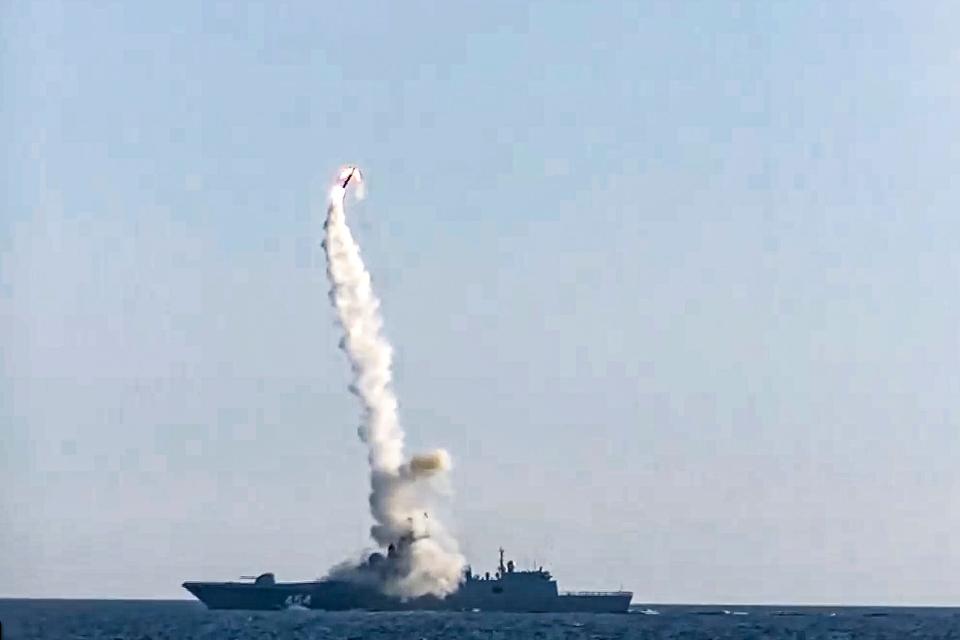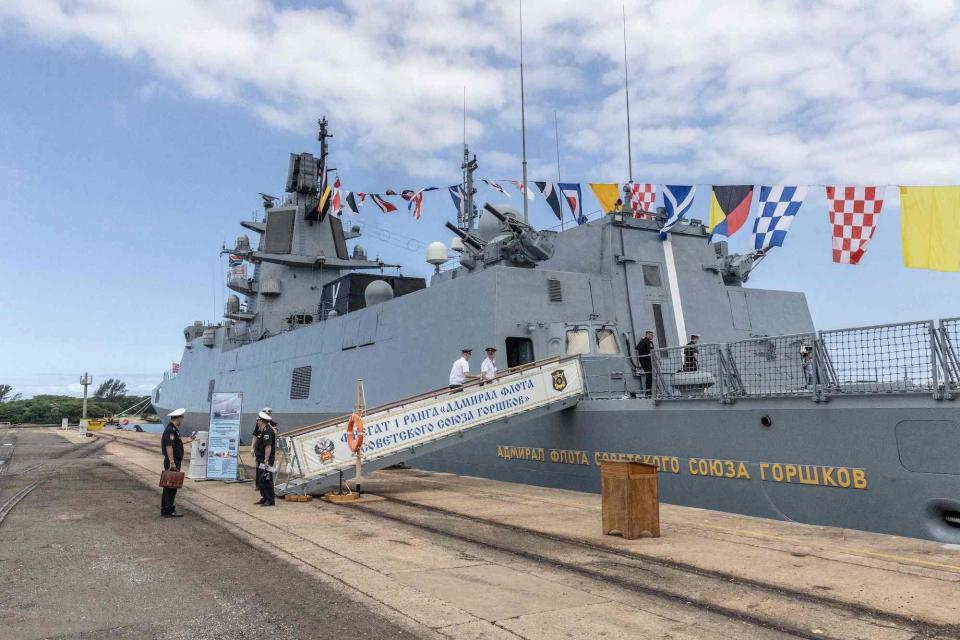A Russian warship that just sailed into Cuba can carry Putin's new prized hypersonic missiles

One of the Russian warships docked in Cuba can carry Putin's prized hypersonic missiles.
Russian leadership has touted the Zircon as a fast, highly maneuverable, and unbeatable weapon.
The missile's actual capabilities are questionable, but Russian hypersonic missiles are a concern.
A Russian warship docked off the coast of Cuba can carry advanced strike capabilities, specifically new hypersonic missiles.
The Zircon scramjet-powered hypersonic cruise missiles, relatively new weapons in Moscow's arsenal, have been touted by the Kremlin as being unbeatable and unrivaled by any other system, though questions remain about their actual capabilities.
The Russian frigate Admiral Gorshkov arrived in Cuba on Wednesday ahead of a Caribbean air and maritime exercise after conducting drills in the Atlantic earlier in the week. The ship — along with two other vessels and a stealthy, nuclear-powered submarine that's especially concerning to the US and NATO — will remain in Cuba for a five-day official visit.

The visit and training are quite routine for Russia and Cuba. US officials have noted that they're monitoring the situation and don't anticipate any threat.
But the arrival of the Admiral Gorshkov, a first-in-class vessel commissioned in 2018 and the first ship to carry the Zircon, and the Kasan make the visit nonetheless notable. It is currently unclear if the frigate is carrying the missiles, as it also carries Kalibr cruise missiles.
The Zircon, sometimes spelled Tsirkon, was first tested on the Admiral Goshkov in October 2020. At the time, Russia's Defense Ministry said it flew at speeds of Mach 8 before hitting a target nearly 300 miles away. Subsequent testing has also occurred, and last year, the ship sailed into the Atlantic with the weapons on board.
The new weapon is capable of being used against targets on land and at sea.
#Footage First-ever launch of a #Tsirkon hypersonic cruise missile carried out by the 22350 class frigate #AdmiralGorshkov to hit a target located in the Sea of Barents https://t.co/4WxDqhWWdW #RussianNavy #CruiseMissiles #MissileLaunch #Trials #RussianWeapons pic.twitter.com/F7FnA0n8yj
— Минобороны России (@mod_russia) October 7, 2020
Hypersonic missiles are fast, highly maneuverable, and fly unpredictable flight paths and patterns that can make intercepting them extremely difficult. The missiles fly low and can change direction in an instant, and their direction and altitude make them harder to track and kill than, for example, a ballistic missile on a parabolic flight path.
But while Putin has touted the Zircon's capabilities as unbeatable, unrivaled, and unlike any other weapon in the arsenals of the world's militaries, it remains to be seen if it can actually live up to those grand claims. Other Russian weapons haven't.
Experts have said that although the missile shouldn't be underestimated, its ability to travel at blinding speeds and hit moving targets, as Putin has claimed, may not be entirely true.

Along with Russia, China has also developed a hypersonic missile, designated the DF-ZF, which it claims can travel five times the speed of sound and hit targets at a distance of 3,400 miles.
The US is working on its own hypersonic missiles, but there are notable concerns that the development and fielding of these weapons continue to trail behind America's rivals. The US is also working with Japan on new air defense systems that can intercept hypersonics.
Read the original article on Business Insider


